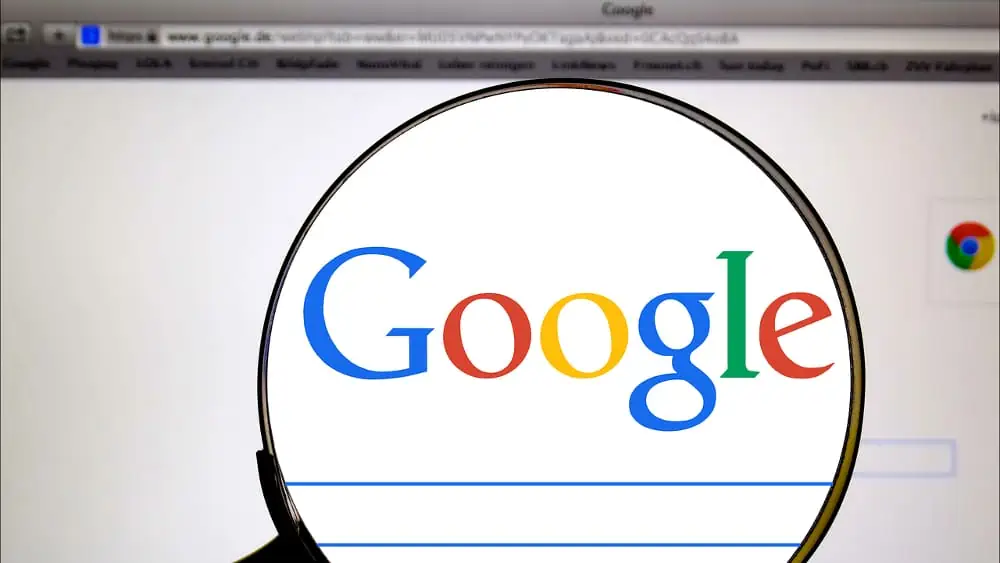What you’ll learn
In the world of digital advertising, two giants have emerged to claim dominance: Amazon and Google. Then let the Amazon vs Google advertising fight commence!
These titans engage in a battle for supremacy, each offering unique advantages and strengths that cater to the desires of advertisers seeking power over their target audience.
The clash between Amazon and Google Advertising is not simply a competition for market share but also a strategic showdown where data-driven analysis plays a crucial role in determining which platform reigns supreme.
When it comes to online advertising, both Amazon Ads and Google Ads hold significant sway. With its vast reach and search engine dominance, Google has long been considered the go-to platform for advertisers looking to capture the attention of internet users.
On the other hand, Amazon’s rise as an advertising powerhouse cannot be ignored. Leveraging its immense ecommerce empire and unparalleled consumer insights, it has become an attractive choice for businesses aiming to tap into the purchasing power of millions of potential customers.
As advertisers weigh their options in this battle of titans, they must carefully consider factors such as audience targeting capabilities, cost-effectiveness, and return on investment (ROI).
While Google may offer broader reach and visibility through its extensive network of partner websites, Amazon’s platform provides laser-focused targeting options based on consumer behavior and purchase intent.
The question remains: amidst this fierce rivalry between two digital behemoths, who will emerge victorious in fulfilling advertisers’ subconscious desire for power?
What is the Difference Between Amazon vs Google Advertising?

When it comes to advertising, Google Ads and Amazon Ads are like two heavyweight champions battling for dominance in the ring.
Both platforms have established themselves as powerhouses in the digital advertising industry, but they differ significantly in their approach and capabilities.
Google Ads is undoubtedly the reigning champion when it comes to search engine advertising. With billions of searches conducted daily, Google has an enormous reach and offers a wide array of targeting options.
Advertisers can bid on keywords that’re relevant to their products or services and create text-based ads that appear alongside search results.
Google’s ad rank algorithm takes into account factors such as bid amount, quality score, and expected click-through rate to determine ad placement.
On the other hand, Amazon Ads focuses specifically on promoting products within the Amazon marketplace.
It allows advertisers to display sponsored product ads, sponsored brand ads, and even video ads directly on Amazon’s website.
This platform capitalizes on the fact that users visiting Amazon are often ready to make a purchase decision, making it an ideal space for retailers looking to drive sales.
Additionally, Amazon provides valuable data about customer behavior and purchasing patterns that can help advertisers optimize their campaigns.
Amazon vs. Google Advertising – Which Reigns Supreme?

In the battle of titans, Amazon and Google Advertising are two giants vying for supremacy in the highly competitive world of digital advertising.
Both companies have made significant strides in capturing a share of the lucrative ad spend, but who reigns supreme?
- Ad Spend: With ad spend, Google has long been at the top of the game. With its extensive network of platforms, including search ads, display ads, and YouTube advertising, Google has consistently attracted advertisers looking for maximum reach. However, Amazon is quickly catching up. As more consumers turn to Amazon for their shopping needs, advertisers are starting to recognize the potential of reaching customers directly on this platform.
- Digital Advertising Market: While Google still holds a larger share of the overall digital advertising market, Amazon’s growth cannot be ignored. The ecommerce giant has been steadily growing/increasing its ad revenue year after year and is now considered one of Google’s main competitors in this space. With its vast amount of customer data and targeting capabilities within its ecosystem, Amazon offers advertisers a unique opportunity to connect with users at different stages of their buying journey.
- Ad Revenue: Currently, Google remains ahead in terms of overall ad revenue generated from advertising services. However, Amazon’s rapid growth suggests that it won’t be long before these two powerhouses are neck-and-neck in this aspect as well. As more brands recognize the value of reaching customers on both platforms simultaneously or strategize their campaigns based on specific objectives such as brand awareness or product sales, conversion rates will become an essential factor in determining which platform ultimately reigns supreme.
While Google currently holds a dominant position in terms of ad spend and overall ad revenue generated from advertising services globally, however, Amazon’s rise as a formidable competitor cannot be overlooked either, given its growing influence in e-commerce and extensive customer data insights.
Why Has Amazon Become So Popular As An Advertising Platform?
Boasting a vast amount of customer data and unique targeting capabilities, it’s no wonder that advertisers are flocking to Amazon as their go-to advertising platform.
In the world of digital advertising, Amazon has emerged as a force to be reckoned with.
With its extensive reach and dominance in the e-commerce industry, it offers advertisers unparalleled access to a massive customer base.
🗣️ Pro Tip: This unique aspect gives Amazon an edge regarding conversions and return on investment for advertisers.
The sheer volume of data that Amazon possesses allows advertisers to target particular audiences with precision, ensuring that their ads are seen by the right people at the right time.
When it comes to online advertising platforms, Amazon stands out for its ability to directly connect advertisers with consumers who are already in a buying mindset.
Unlike traditional search engines like Google, where users might browse for information or entertainment purposes, Amazon is primarily a marketplace where people go specifically to make purchases.
Furthermore, Amazon’s success lies in its strategic approach towards advertising. The company understands that personalized recommendations play a crucial role in influencing consumer behavior.
By leveraging its vast customer data and sophisticated algorithms, Amazon can serve highly targeted ads based on users’ previous purchases and browsing history.
This level of personalization not only increases the effectiveness of advertisements but also enhances user experience by showing them products they’re genuinely interested in.
As one of the premier online advertising platforms today, Amazon’s popularity stems from its robust customer data and intricate targeting capabilities.
Why is SEO better than Google Ads?

By leveraging the power of SEO, or search engine optimization, you can tap into a world of organic traffic and achieve long-term, sustainable growth for your business.
In the battle of titans between SEO and Google Ads, it becomes evident that SEO reigns supreme when it comes to an effective advertising strategy.
While Google Ads may offer immediate visibility and results, SEO provides a more strategic approach that yields higher returns in the long run.
One key advantage of SEO over Google Ads is its ability to generate organic traffic. With SEO, businesses can optimize their content and website to rank much, much higher in search engine results pages without having to shell out a dime for ad placements.
This means that once you have established a strong SEO foundation, you can continue to attract traffic without ongoing advertising costs.
In contrast, Google Ads requires continuous investment to maintain visibility and drive traffic to your ecommerce store.
Furthermore, SEO offers better targeting capabilities compared to Google Ads.
With proper keyword research and optimization, businesses can ensure that they are attracting relevant users who’re actively searching for their products or services.
This targeted approach increases the likelihood of conversions and maximizes the return on investment. On the other hand, Google Ads relies heavily on bidding strategies and ad placements, which may not always guarantee reaching the intended audience.
Which is Better: Amazon Ads or Facebook Ads?
When it comes to digital advertising, entrepreneurs often find themselves torn between the powerful allure of Amazon Ads and the captivating charm of Facebook Ads.
Both platforms offer unique benefits and advantages that can help businesses reach their target audience effectively.
🗣️ Pro Tip: Amazon might be more suitable if you’re looking for precise targeting options with high-intent audiences focused on purchase behavior.
To determine which is better, let’s take a closer look at some key factors:
- Targeting capabilities: Facebook Ads provides extensive targeting options based on demographics, interests, and behaviors. With over 2 billion active users (yes, quite astounding), it provides a vast pool of potential customers. On the other hand, Amazon Ads allows advertisers to target particular users based on their search queries and purchase history within the platform. This level of intent-based targeting can lead to higher conversion rates.
- Ad formats: Facebook Ads supports various ad formats such as images, videos, carousels, and stories. These visually appealing formats can engage users effectively. Amazon Ads primarily focuses on sponsored product listings within search results or product detail pages. While it may lack visual diversity compared to Facebook, its ads are placed directly in front of users who are actively searching for related products.
- Costs: When considering ad spend, it’s important to analyze industry trends. According to eMarketer’s estimates for 2021, digital advertising spending in the US will amount to $205 billion, with Google leading at $58 billion and Amazon following closely at $15 billion+. In comparison, Facebook is projected to have an ad spend of $13 billion+. Lower competition on Amazon might result in more cost-effective campaigns for certain industries.
Choosing between Amazon Ads and Facebook Ads depends on your specific target audience and business goals.
However, if you prefer diverse ad formats that allow you to engage with a broader user base through visually appealing content across multiple channels like Instagram and Messenger, along with advanced audience targeting capabilities based on demographics and interests, Facebook Ads (and other social media platforms) could be the better choice.
Why are Google Ads More Expensive?

Why do Google Ads come with a higher price tag? Let’s delve into the factors contributing to its increased cost.
Factor #1:
When it comes to online/digital advertising, Google Ads is renowned for its dominance in the digital marketing world. One of the key reasons behind its higher pricing is its ability to deliver targeted ads to a vast audience.
With over 90% market share in search engine usage, Google has access to an extensive pool of potential customers for ecommerce businesses.
This high demand for ad space drives up the cost as advertisers compete for top ad positions.
Factor #2:
Another factor that contributes to the higher cost of Google Ads is its Ad Rank system. Ad Rank determines where an ad will be displayed on search engine results pages and how much an advertiser needs to pay per click.
The formula takes into consideration several factors, such as bid amount, ad relevance, and expected click-through rate.
Advertisers often need to increase their bids or improve their overall campaign performance to achieve a higher Ad Rank and secure better ad placements.
As a result, this competitive nature drives up the advertising cost on Google’s platform.
Factor #3:
Additionally, Google Ads’ emphasis on ad relevance also plays a role in its higher pricing structure. The platform rewards advertisers who provide highly relevant ads by giving them better placement at lower costs per click.
This encourages advertisers to invest more time and effort in creating compelling ads that resonate with their target audience.
However, achieving high ad relevance requires continuous optimization and monitoring of campaigns, which can lead to increased costs for businesses looking to maintain a strong presence on Google Ads.
Several factors contribute to the higher cost of running advertisements on Google Ads compared to other platforms like Amazon or Facebook Ads.
The immense reach and popularity of Google’s search engine drive up demand for ad space among e-commerce businesses.
Additionally, factors such as Ad Rank and emphasis on ad relevance further increase competition and costs within the platform.
Analyzing Performance and Maximizing ROI
Ads create expectations. To analyze the performance of Google Ads campaigns and maximize ROI, one should regularly monitor key metrics like click-through rate (CTR), conversion rate, and cost per conversion.
According to a study, the average CTR for Google Ads across all industries is 3.17%.
This data-driven approach allows advertisers to assess the effectiveness of their campaigns and make strategic adjustments to improve results.
One essential metric to consider is ad relevance, which plays a crucial role in determining Google Ad Rank. Ad Rank determines an ad’s position on search engine result pages (SERPs), impacting its visibility and potential clicks.
Advertisers must continuously optimize their ads by aligning them with relevant keywords, creating compelling ad copy, and ensuring landing pages offer valuable content related to the user’s query.
Additionally, monitoring competition within ad auctions is vital for maximizing ROI. Amazon Advertising Platform has emerged as a strong contender in online advertising alongside Google.
By analyzing competitors’ strategies and bid landscapes within these auctions, advertisers can gain insights into market trends and identify opportunities to outperform rivals while maintaining efficient costs.
🗣️ Pro Tip: Analyzing key performance metrics such as CTR, conversion rate, and cost per conversion is paramount for optimizing Google Ads campaigns.
Ad relevance significantly influences ad rank on SERPs, impacting visibility and potential clicks. Moreover, understanding competitor behavior within ad auctions can provide valuable insights for staying ahead in the battle between Amazon Advertising Platform and Google Ads while achieving maximum ROI.
Final Words
In the ever-evolving landscape of digital advertising, understanding the weaknesses and strengths of each platform is crucial for businesses to make informed decisions.
Advertisers must continuously analyze key performance metrics and stay ahead of the competition to reign supreme in the advertising world.
Ultimately, the battle of titans between Amazon and Google Advertising continues to shape ecommerce businesses and the digital marketing landscape, offering businesses unprecedented opportunities to engage with their target audience effectively.
As these giants continue to innovate and evolve, advertisers must embrace data-driven strategies to optimize their campaigns and achieve advertising success in this competitive arena.
Comments
Related Posts

10 Profitable Product Categories for Amazon Affiliates 2025
What you’ll learn Amazon is a favorite for experienced and…

Unlock the Secret to a Profitable Automated Amazon Store: How to Build a Hands-Free Income Stream
Ever dreamed of running a profitable Amazon business while sipping…

Master Amazon New Restricted Keywords: A Seller’s Guide to Success
Changes to Amazon’s restricted keywords list have taken a lot…






